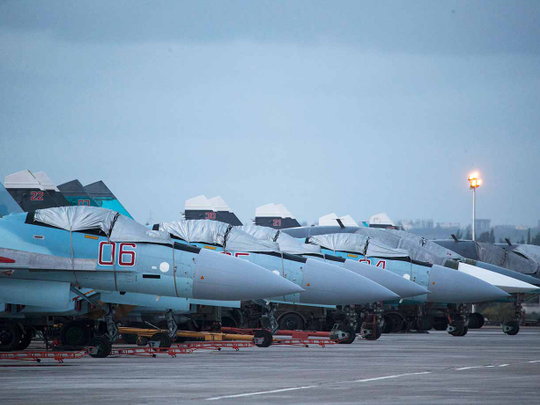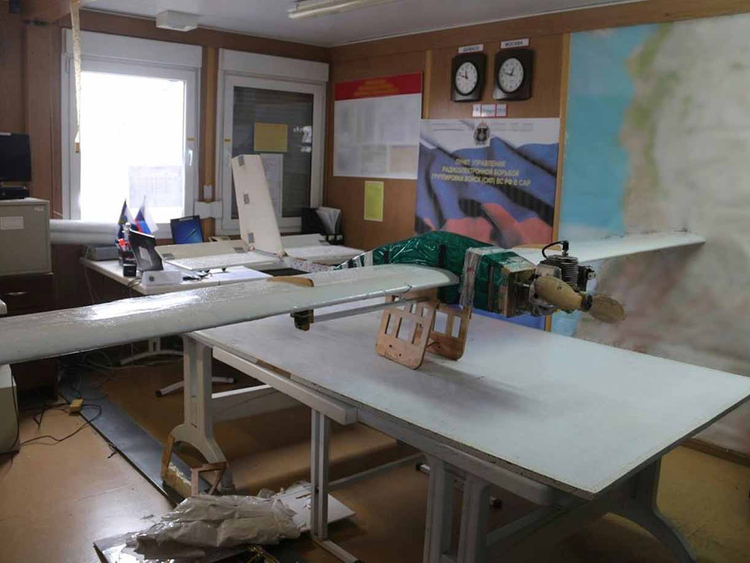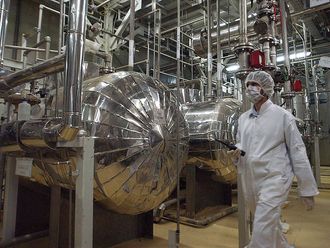
Beirut: A series of mysterious attacks against the main Russian military base in Syria, including one conducted by a swarm of armed miniature drones, has exposed Russia’s continued vulnerability in the country despite recent claims of victory by President Vladimir Putin.
The attacks have also spurred a flurry of questions over who may be responsible for what amounts to the biggest military challenge yet to Russia’s role in Syria, just when Moscow is seeking to wind its presence down.
In the most recent and unusual of the attacks, more than a dozen armed drones descended from an unknown location onto Russia’s vast Hmeimim air base in northwestern Latakia province, the headquarters of Russia’s military operations in Syria, and on the nearby Russian naval base at Tartus.
Russia said that it shot down seven of the 13 drones and used electronic countermeasures to safely bring down the other six. It said no serious damage was caused.
The drone attack, however, came less than a week after two Russian servicemen were killed in a sustained mortar assault on the same base, which appears to have caused some damage to Russian military assets.
The Russian Defense Ministry denied a report in the Russian Kommersant publication that seven warplanes were put out of action in the mortar attack, including two of its premier Su-35 fighter jets and four Su-24 attack aircraft, losses that would represent the worst single day for the Russian air force in decades. A Russian journalist posted photographs of damage that suggested at least some planes had been hit.
Taken together, the drone and mortar attacks appear to represent the most concerted assault on the Russian headquarters in Syria since the military intervention in September 2015, which has broadly succeeded in its goal of shoring up President Bashar Al Assad’s fight to suppress the seven-year-old rebellion against his rule.
Russian news outlets have also reported two smaller drone attacks against Russian outposts in the provinces of Homs and Latakia, as well as another attack against Hmeimim, all in the past two weeks.
The Hmeimim base, the heart of Russia’s military operations in Syria, is deep in Syrian-government-held territory and until now had seemed immune to attack.
The attacks raise questions about the sustainability of Russia’s gains in Syria, said Jennifer Cafarella of the Washington-based Institute for the Study of War.
In December, Putin visited the Hmeimim base and said Russia would start to wind its presence down because the war in Syria is essentially over.
The events of recent days are a demonstration “that whoever conducted these attacks can still penetrate regime areas and impose costs on the Russians,” she said.
“The gains the regime has made are not secure and are at high risk of being temporary.”
Perhaps the biggest question of all, however, is who was responsible. What makes the attacks especially unusual is that there has been no claim, triggering a frenzy of speculation in the Russian and Syrian news media over who may have carried them out.
Russia’s Defense Ministry on Tuesday appeared to accuse the United States of supplying the technology for the drone attack, saying the assault required a higher level of expertise than any armed group in Syria is known to possess.
Compounding the suspicions, the ministry said in a statement on its Facebook page that a US Poseidon reconnaissance aircraft was in the skies above the area for four hours during the drone assault.
Pentagon spokesman Eric Pahon said the allegation was “absolutely false.”
But on Wednesday, Russia changed its story and accused Turkey of being behind the attacks.
Russia said it held Turkey accountable for the drone attack, calling it a breach of their cease-fire agreement in northern Syria, while Turkey accused Russia and Iran of jeopardising the entire peace process by launching an offensive to take control of an opposition-held air base in the area.
The Russian Defense Ministry named the opposition-controlled village of Muwazarra in southern Idlib province as the location from which a swarm of at least a dozen drones armed with crude explosives was launched Saturday, attacking the Hmeimim air base and the nearby naval base of Tartous in northwestern Syria. However, opposition groups usually boast about their operations and they have been silent about this attack.
Among the theories circulating widely is that disgruntled Alawites from Al Assad’s own minority sect were responsible.
A statement about the attacks on the base, which is in a predominantly Alawite area, was posted online in the name of a shadowy group called the Free Alawite Movement.
It warned Alawites who support the Syrian regime that the attacks proved Al Assad’s hold on power is not secure, but did not explicitly claim that it carried out the attacks.
A number of Alawite opposition members said they did not think the group is real and speculated that foreign intelligence agencies are seeking to create the impression of strife among regime loyalists.
Another claim made in Syrian opposition news outlets is that an Iranian-backed militia fighting on behalf of the regime and located in the government-
controlled hills nearby was responsible. According to that theory, Iran wants to thwart Russia’s efforts to impose a peace settlement on Syria that would undermine Iranian interests.













